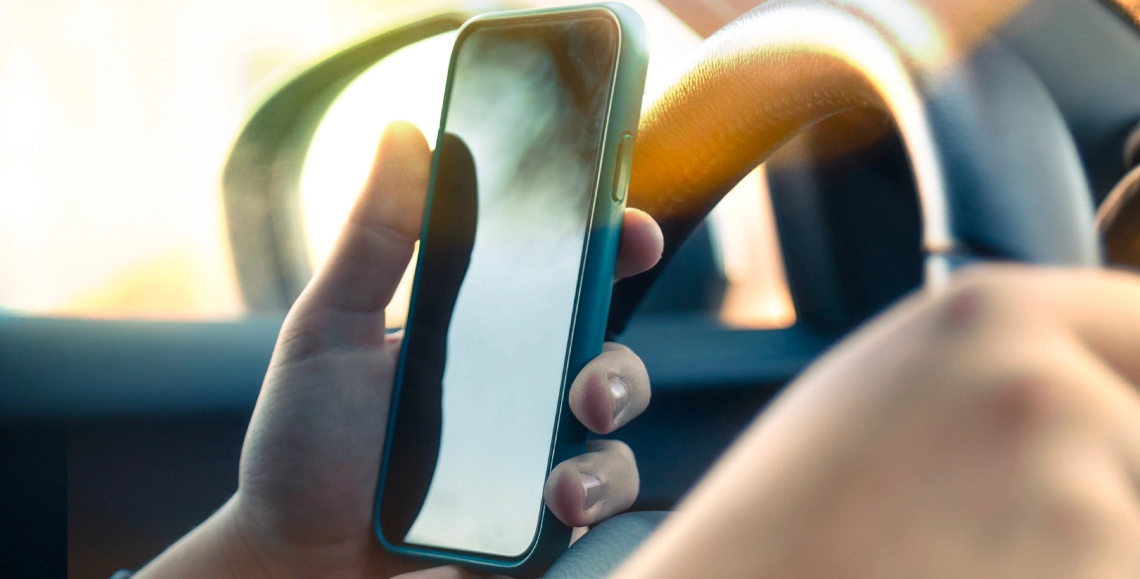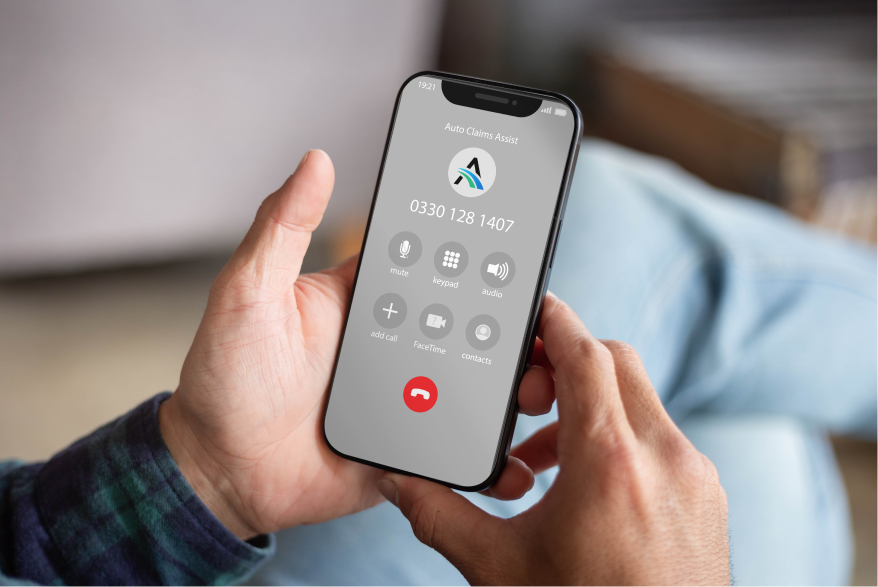How to prove a car accident wasn’t your fault
Once everyone involved is safe and emergency services have been called to help with injuries and road clearance, ensure to thoroughly examine the scene to determine who’s at fault:
Consider the factors that caused the accident:
Evidence to consider includes:
Useful Tip:
Use a mixture of drawn diagrams, photographs and videos to collect evidence of the accident.
Below is an extensive guide on rear end accidents and how to prove a car accident wasn’t your fault.
A rear-end car accident is one of the most common types of car accidents. They can occur when one driver is following another too closely and fails to stop or slow down in time to avoid hitting the car in front of them.
Rear-ended car accidents often result in minor injuries, but they can also be serious or even fatal.



If the accident wasn’t your fault, you are eligible to start a non-fault claim.
Rear-end collisions can be complex and there are many factors that can contribute to rear-end accidents, including:
Distracted driving is an increasing issue on our UK roads.
There are three main types of distraction:
Any of these can lead to a read-end car accident.
Distracted driving is also a common occurrence seen in other types of accidents, such as:
When it comes to visual distractions, sources say many people are often talking on their mobile phone, texting or reading a text message while behind the wheel.
This type of distraction has been shown to slow drivers’ reaction times and also increase their likelihood of getting into an accident. In fact, texting while driving is six times more likely to lead to an accident than drunk driving.
When it comes to manual distractions, many people are often reaching for something in their vehicle while driving. This could be anything from a dropped mobile phone to a food or drink item.
Reaching for an object can take a driver’s hands off the wheel and increase the chances of getting into an accident.
Cognitive distractions are often the most dangerous because they take a driver’s mind off the task of driving. This could be anything from daydreaming to having a conversation with a passenger.
In an online survey, nearly 80% of respondents said they had engaged in some form of cognitive distraction while driving.


Reckless driving is a form of driver behaviour that places others in danger and is often associated with speeding.
Studies have shown that reckless drivers are more likely to be involved in car accidents, especially those involving pedestrians or vehicles at crossroads.
Speeding, tailgating, weaving in and out of lanes, and other aggressive driving behaviours are all classed as reckless.
These crashes often occur when a driver loses control of their vehicle and collides with another car or object.
It’s common for the collision of the reckless driver to be into the rear-end of another vehicle.
Reckless drivers can also lead to other traffic offences, such as illegal u-turns and running red lights.
Poor road conditions such as potholes, uneven surfaces, or challenging weather conditions may lead to a read-end car accident. These accidents often involve one of the two drivers losing control of their vehicle, which can result in an un-controlled rear-end collision.
Ice, snow, rain, and other adverse weather conditions can make it more difficult for drivers to stop in time to avoid an accident, which usually ends in the out-of-control vehicle making a sudden impact into the back of another.
If a car’s brakes are not working properly, it can be more difficult for a driver to avoid hitting the car in front of them, causing a rear-end car accident.
Defective brakes cause a car to not stop properly or to not stop in time.
When a driver is not being vigilant when driving or is not keep a safe distance, it increases the risk of causing a rear-end accident.
Inattention is the act of paying less attention or focusing on something less than you should. This can have serious consequences, especially when it comes to driving.
Inattentive drivers may be more prone to rear-end accidents, as they may not notice slowing or stopped cars ahead of them in time to avoid a collision.
There are a number of factors that can contribute to inattention while driving.
Common contributors include distractions inside the car, such as talking on the phone or fiddling with the radio, as well as outside distractions, like billboards and other vehicles.
Additionally, drivers who are tired, drowsy, stressed or fatigued can also affect their ability to stay focused behind the wheel. These drivers are more likely to rear-end another car.

After a rear end accident, contacting Auto Claims Assist is the best option to make a claim.
Generally, as all of the above situations discover, the driver who rear-ended the other car will usually be considered at fault, especially if you are able to collect evidence that they caused the rear-end collision from factors listed above or similar.
However, there are some exceptions to this general rule that also needs to be considered.
There are many accidents on our UK roads that are not caused by the driver who hits the back of the other car.
If the lead driver suddenly stops without necessary reasoning in the middle of the road and is rear-ended by another car, they may be held liable for causing the accident. The driver ahead may intentionally or unnecessarily brake in a manner that causes the accident.
Similarly, if someone is rear-ended at an intersection or other location with traffic lights or signs, it can be difficult to determine who is at fault as there may be multiple factors involved.
If you were not at fault for the accident our team can initiate your non-fault claim and manage the whole claim from start-to-finish.
Let us help you with your non-fault claim.



If the accident wasn’t your fault, you are eligible to start a non-fault claim.
If you have been involved in a rear-end car accident, it is important to seek medical attention right away. Even if you do not think you have been injured, it is important to get checked out in case there are any hidden injuries or complications.
It’s likely that the police will arrive on the scene first at an accident.
If you are injured, the police can also call an ambulance for you. This will ensure that you receive the medical care you need and can also help gather more evidence about the accident.
Trustpilot
"Exceptional service. Really eased my worries, explained the process throughout and were happy to help at each stage when I had any questions. So thankful to Ron and the team for their help in sorting my claim. Would 100 per cent recommend!"
You should also contact the police to file an official report about the accident.
The police can be a great resource for gathering evidence and information.
The police can take statements from witnesses at the scene of the accident. This can be helpful in understanding what happened and help evidence who was at fault.
It’s important that you take photographs after the accident for your evidence during claiming. Make sure to take pictures of all vehicles, the location, road conditions and even injuries.
If the police are on scene, they can also take photographs of the scene and damage to both cars. Police evidence and photographs can be very useful when processing your non-fault accident claim for damages against the other driver.
The police are trained in accident reconstruction, so they may also be able to estimate how fast each vehicle was going at the time of impact. This can be crucial information when determining fault for the accident.
As some factors in a rear-ended car accident can come down to your word against the other driver’s word, this level of detail can be key in establishing fault.
Some police departments even have special accident investigation teams that can help with more complex cases or serious accidents. If you have been involved in a severe or complex accident, it may be worth asking the police to contact this team for assistance.



If the accident wasn’t your fault, you are eligible to start a non-fault claim.
The most essential thing is to ensure that everyone is safe. If there are any injuries, call the police or an ambulance first before worrying about anything else.
Whatever occurs after an accident, whether you’re found negligent or not, it’s critical to never admit fault. If you do so, your ability to file a claim for compensation may be significantly harmed.
When everything has calmed down, concentrate on gathering information and evidence about the accident. This is critical to the processing of a non-fault claim.
To read an extensive guide on what to do after a car accident, click here.
Trustpilot
"My car was hit from behind when I wasn’t even in the car. Within 48 hours I had a like for like courtesy car and had had my damaged car collected. Within 3 weeks my car was fixed, cleaned and returned without it costing me a penny. Absolutely faultless service."
Related articles
Visit Resource CentreHow to prove a car accident wasn’t your fault
Do I have to pay excess if the accident wasn't my fault
Do I lose my no claims if the accident wasn't my fault
Will A Non Fault Accident Affect My Insurance
Accident Management VS Your Insurance Company


Our team of non-fault claim specialists are ready to answer any questions you have. Provide your details here to request a callback. One of our advisors will call you back as soon as possible. Alternatively, call us on 0330 128 1407 to speak to someone now.
One of our team will give you a call